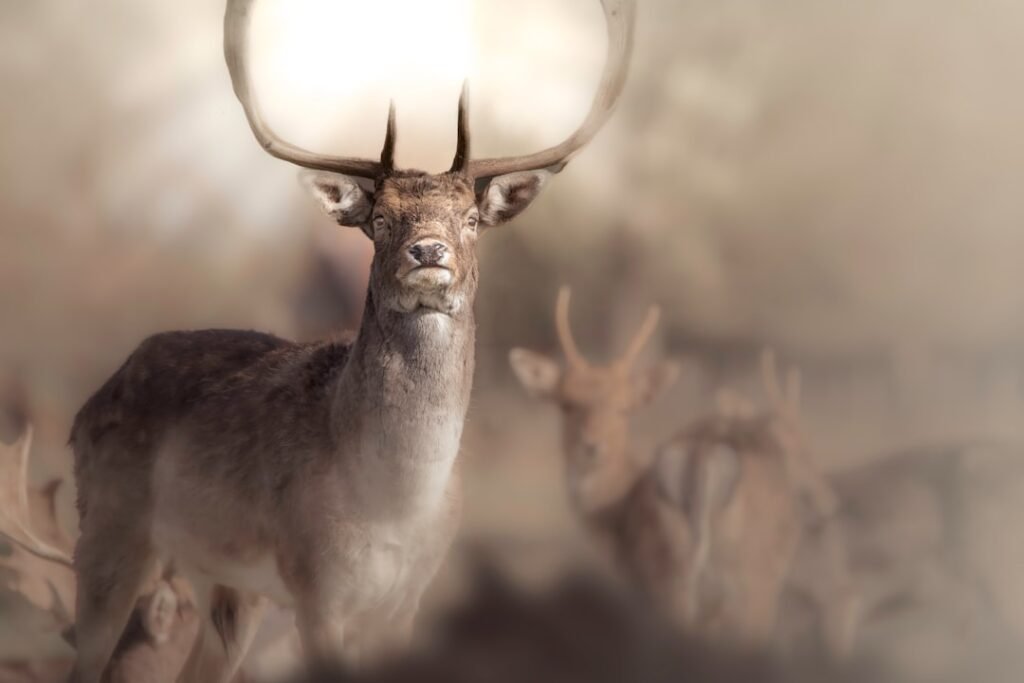Have you ever wondered which animal you’d be if your personality was based on your strongest sense? The way you process the world around you reveals fascinating connections to the animal kingdom. Your brain might work like an eagle scanning vast landscapes, an elephant detecting scents from miles away, or a bat navigating through sound waves in complete darkness.
Every day, you rely on your senses to make decisions, form memories, and connect with others. Yet most people have one dominant sense that shapes how they experience life. This isn’t just about preference – it’s about how your brain is wired. Three of your senses are primarily used in learning, storing, remembering and recalling information. Your eyes, ears, and sense of touch play essential roles in the way you communicate, perceive reality and relate to others. Because you learn from and communicate best with someone who shares your dominant modality, it is a great advantage for you to know the characteristics of visual, auditory, and kinesthetic styles and to be able to identify them in others. So let’s dive in and discover which incredible animal adaptations mirror your sensory superpowers.
The Visual Personality: Eagles and Hawks

If you’re the type of person who takes detailed notes, loves charts and diagrams, and can spot a typo from across the room, you might share traits with the most visually gifted creatures on Earth. Eagles reign supreme with their extraordinary vision, which is among the best in the animal kingdom. Their eyes are specially adapted, allowing them to spot prey from miles away while soaring high above.
Birds like eagles and hawks can see very far. From high up in the sky, they can spot tiny animals or food on the ground. An eagle’s vision is about four times sharper than ours! Visual people function in remarkably similar ways. They need to see information to understand it fully, just like how eagles rely on their incredible eyesight to survive in the wild.
Sharp-Eyed Characteristics in Humans

Visual style is learning by seeing. You learn visually whenever you gain information from sight. This includes more than just the viewing of pictures and your surroundings. Visual learning also encompasses the written word. People with dominant visual processing often find themselves drawing pictures in margins, highlighting key points, and organizing information into colorful charts.
Like hawks scanning the terrain below, visual personalities excel at pattern recognition and spatial relationships. Visual learners benefit greatly from teaching that utilizes illustrations, charts, diagrams, videos, etc. They often feel a need to convert spoken instruction into visual form by taking notes. They see the big picture before diving into details, much like how raptors assess their entire hunting ground before focusing on specific prey.
The Auditory Mind: Dolphins and Whales

Do conversations energize you more than reading? Can you recognize friends by their footsteps or remember song lyrics after hearing them just once? Your brain might work like the sophisticated sonar systems of marine mammals. Like bats, dolphins use echolocation to hunt for prey, and they also rely on complex sounds to identify each other and communicate. They generate very high-pitched pulses and clicks using their foreheads which bounce off objects and echo back to their ears. Dolphins’ hearing range extends from about 75 Hz all the way to 150,000 Hz – far beyond the pitches that humans can hear.
Auditory personalities process the world through sound patterns, rhythm, and verbal communication. Auditory style is learning by hearing. Learners with strong auditory ability are able to hear and comprehend without missing much. They share this incredible ability to extract detailed information from sound with dolphins, who can determine the size, distance, and even internal structure of objects through echolocation.
Sound-Based Processing Powers

Auditory learners often talk to themselves. They also may move their lips and read out loud. They may have difficulty with reading and writing tasks. They often do better talking to a colleague or a tape recorder and hearing what was said. This mirrors how whales and dolphins rely heavily on vocalizations for complex social interactions.
Baleen whales can instead emit and hear very low-frequency, infrasonic sounds. These sounds can travel thousands of kilometers – across entire ocean basins. They are used for communication with other whales, not for hunting. Similarly, auditory people excel at long-distance communication and can pick up subtle emotional cues in voices that others might miss entirely.
Touch-Oriented Personalities: Spiders and Octopuses

Some people need to physically handle things to understand them fully. They learn by doing, moving, and experiencing textures and temperatures. These kinesthetic personalities share fascinating similarities with creatures that have evolved extraordinary touch capabilities. Spiders are one of the very few animals with a hypersensitivity to touch. By having massive numbers of hairs (known as trichobothria) on their legs, they can detect and trace the origin of a vibration created by an object or another animal. As a result, hunting their prey becomes as easy as merely standing on their self-made web.
Kinesthetic style is learning by doing. You learn in this manner whenever you capture new information through physical activity. Like spiders sensing the slightest vibration through their webs, kinesthetic people often have an uncanny ability to “feel” when something isn’t right in their environment.
Smell-Dominant Types: Elephants and Bears

While humans don’t typically think of smell as a dominant personality trait, some people are surprisingly attuned to scents and chemical signals. They might choose restaurants based on aroma, feel nauseated by certain smells others don’t notice, or have vivid smell-based memories. The African bush elephant has the best nose in the whole animal kingdom. Thanks to nearly 2,000 olfactory receptor genes compared to the meager 1000 sensors found in dogs, humans only have 400 scent receptors.
People with heightened smell sensitivity often have strong emotional reactions to environments and can detect subtle changes others miss. According to biological studies, African bush elephants got double the smell-sensing genes from their ancestors during species division. To be exact, interestingly, elephants top the charts based on the number of smell genes with 1948, while cows and dogs take the second and third spots with 1186 and 811 genes, respectively! This genetic advantage allows elephants to detect water sources from miles away and recognize family members by scent alone.
Multi-Sensory Personalities: Bats and Owls

Most people aren’t limited to just one dominant sense. While most people have a dominant learning style, nobody has just one learning style. Everyone uses each of the learning styles to some degree. Some are stronger in one style while others have even strength in all styles. The reality is that we all have a custom “learning style” (and multiple intelligences) that is, in varying degrees, a combination of Visual, Auditory and Kinesthetic learning.
These multi-sensory individuals function like nocturnal hunters who combine multiple senses for maximum effectiveness. Being nocturnal, owls rely on both their sharp sight and their hearing. Bats represent the ultimate multi-sensory approach – they use echolocation for navigation, excellent hearing for communication, and even heat detection in some species for hunting warm-blooded prey.
Adapting Your Environment Like Animals

Just as animals have evolved specific sensory adaptations for their environments, you can optimize your surroundings based on your sensory preferences. Senses help all animals orient themselves in their environments, to find food, to escape from danger, and to find others of their own kind. Visual people might benefit from good lighting and organized, clutter-free spaces, much like how eagles need clear sight lines for hunting.
Auditory personalities often work better with background sounds or music, similar to how dolphins communicate in the constant noise of ocean currents. These sound waves, below the range of human hearing, allow elephants to maintain contact with members of their herd, coordinate movements, and even detect distant thunderstorms. This ability is essential for navigating vast landscapes and maintaining social bonds. The subtle yet powerful communication of elephants reflects the deep social structure and intelligence of these gentle giants. Kinesthetic people, like the ultra-sensitive spiders, need movement and tactile stimulation to maintain focus and engagement.
Communication Styles Across Species

Your dominant sensory preference dramatically affects how you communicate with others. For example, if a client when working with a coach states “my future is hazy” and the coach replies with “can you get a feel that things could change?” The coach is not talking the same language as the client. He has replied to a visual statement using kinaesthetic language. A reply using visual language would be more effective for example, “if you cleared the haze, could you see things changing?”
Animals demonstrate this principle perfectly in their social interactions. Our regal African elephants communicate using incredibly low rumbling sounds that cannot be heard by the human ear. These rumbles are carried through the air as sound waves and also through the ground as seismic waves. The elephants feel the seismic vibrations by using their trunk and their feet. Concentrated at the tip of their trunks and on the heels and toes of their feet are very sensitive receptor cells called Pacinian corpuscles. They’ve evolved multiple communication channels to ensure their messages get through – something humans could learn from.
Conclusion

Understanding which animal senses match your personality isn’t just a fun exercise – it’s a window into optimizing how you learn, work, and connect with others. Whether you soar like an eagle with visual precision, navigate like a dolphin through sound, or explore like an octopus through touch, embracing your sensory strengths can transform how you experience the world.
The next time you struggle with a task or find yourself in conflict with someone, consider the sensory mismatch. Are you trying to communicate visually with an auditory person? Are you forcing yourself to learn through reading when you really need hands-on experience? The animal kingdom has spent millions of years perfecting these sensory adaptations – perhaps it’s time we learned from their expertise. What do you think – which animal’s sensory superpower matches Tell us in the comments.




